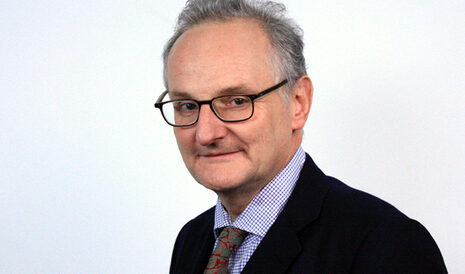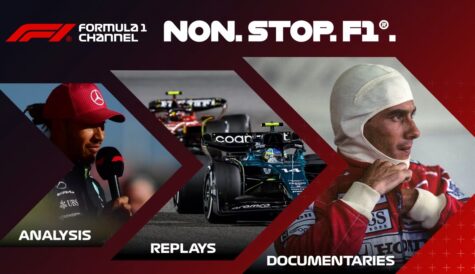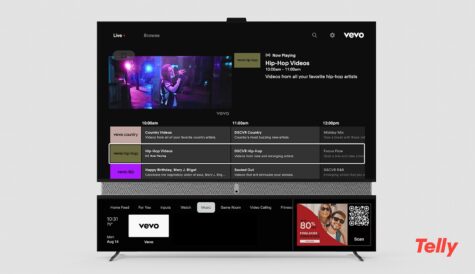Google is a TV “partner, not a predator”, says European chief
Google and other technology providers are “partners and not predators” for the broadcast industry, according to Matt Brittan, president of Google Europe. Speaking at the IBC conference in Amsterdam this morning, Brittin said technology platforms including Chromecast, Android TV and YouTube could help the broadcast industry and enable users to find the content they want.
“We have platforms that are built for everyone,” he said. “We can be a partner no matter where you are coming from in this industry.”
Brittin said Google had learned a lot of lessons from Google TV. “When we started off we didn’t know about the multiscreen experience. Android TV is built on the most popular operating system globally. Users are familiar with it and can bring their apps to the TV,” he said.
He said Android has become “extremely popular” and there is a chance to have fewer OS, which Android for TV could contribute to. He said Android on TV should drive innovation on TV and confirmed that the platform will be free, on the same model as for mobile. “We want to make it easy for a whole ecosystem of players to participate,” he said. Discussions are ongoing, he said. Sony and other manufacturers are developing TVs with Android at its heart and consumers would vote with their wallets, he said.
Brittin said Android TV is much “broader” than Chromecast. He said that Chromecast use is increasing among those who have it.
Brittin said gaming was a very interesting field. He highlighted the example of King.com that is looking to develop apps that can scale globally. He said Google is not in the business of commissioning content but wants to encourage businesses to come to YouTube. “We’ve really tried to listen to the industry and to content creators and understand their concerns and we built content ID [on YouTube],” he said. However, he highlighted that most content owners who discover content uploaded to YouTube leave it up because of the power of the fanbase to drive demand.
He said more people were beginning to make money on YouTube. Pay options are coming, but in a way that is relevant to the audience, he said. However, he said that Google had not got into the business of formally commissioning content, even if it had given advances to YouTube content creators against future advertising revenue to stimulate content creation for the platform.
Google experimented with new advertising formats such as the skippable ad, which encouraged creators to develop more compelling content and also provided feedback about what types of viewers watched particular ads and enabled Google to serve ads better tailored to their tastes.
“Big brands have spent 50 years figuring out how to make TV work for them,” he said, adding that Google is trying through its technology stack and things like M-Dialogue to enable new models and standards for advertising on other screens.
Brittin said he didn’t believe that ‘click to buy’ would be big on YouTube, but he believed other models such as direct partnerships between brands and content providers would become more common.
Brittin said Google is looking at how to solve the “multiscreen challenge” of enabling devices to talk to each other, with user expectations being driven by their experience of smartphones. He compared the TV experience currently to the experience people had of mobile phones eight years ago. Audiences are increasingly looking to interact socially, enabling content providers to gain an opportunity to understand their audiences better, he said.
Brittin said Android TV was about bringing a better user experience to TV, delivering all the apps available on mobile in a TV-friendly way. “It should be simple to take an app you’ve built for Android on phone or tablet and make it available on TV. This is something that is very important for us,” he said.
He said Chromecast is about “making multiscreen magical” by enabling any device to recognise that you have a Chromecast device and put whatever you are watching on your other devices on the TV, delivered or ‘casted’ from the cloud and freeing up the personal device that the viewer is using for other purposes.
Brittin said that fans of major live shows want to go beyond linear timeslots to enteract and comment in a deeper way with the content they like. He highlighted examples of YouTube networks such as Awesomeness TV and Maker Studios, which are now being acquired by major content companies. “It is not the same economics as primetime TV but it is [making an impact],” he said. He said YouTube uploads from amateur content providers also extended the life of TV shows.
Brittan said the world is still at an early stage in the overarching technology trends being driven by connectivity. Only two billion people are currently web-connected, he said. “A huge change happens when people get connected for the first time. All of them are going to be connected through mobile devices which is a huge change.”.
Brittan said change is currently happening at a relatively slow pace. The pace of innovation will increase as more people become connected to high-speed networks and deliver scale, he said. Consumers are now more demanding in terms of control and choice thanks to connectivity, he added.




